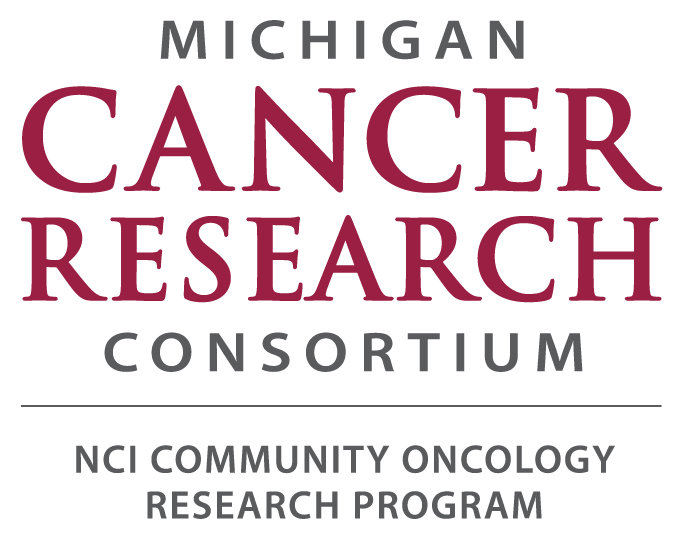Clinical Trials Search
A Phase II Trial of Oral Etoposide with Intravenous Paclitaxel in Patients with Refractory Metastatic Breast Cancer
96-32-54
- Eligibility:Click Here to View1.0) Path (+) breast ca w/evidence of met dz
2.0) must have had 1-2 prior chemo regimens
3.0) must have had 1 tx for met dz
4.0) No prior taxol or taxotere - Consent forms:You must be logged in to view the documents.
- Protocols:You must be logged in to view the documents.
A Phase II Trial of Irinotecan (CPT-11) in Patients with Refractory Metastatic Breast Cancer
96-32-55
- Eligibility:Click Here to View1.0) path (+)breast ca with evidence of progression
2.0) must have had 1 prior regimen in adjuvant setting and only 1 in metastatic setting
3.0) at least 1 prior regimen contained anthracycline or Taxane or Adria for either adjuvant or metastatic dz
4.0) life expectancy >3months - Consent forms:You must be logged in to view the documents.
- Protocols:You must be logged in to view the documents.
A Phase II Trial of Irinotecan in Recurrent Glioma\r
96-72-51
- Eligibility:Click Here to View1.0) Path (+)
2.0) Allowed 1 prior chemo for adj, and 1 for recurrance.
3.0) = 8 wks post RT
4.0) = 4 wks post chemo, = 6wks post nitrosourea-based chemo
Drug: CPT-11, provided.
5.0) - Consent forms:You must be logged in to view the documents.
- Protocols:You must be logged in to view the documents.
A Phase III Comparison of Oral Capsaicin Lozenge Versus Placebo Lozenge for Radiation-Induced-Mucositis\r\r\r
96-92-57
- Eligibility:Click Here to View1.0) Rando d1-3 of RT
2.0) No prior RT to oral mucosa, or concomitant use of chemo - Consent forms:You must be logged in to view the documents.
- Protocols:You must be logged in to view the documents.
A Phase II Study of Adjuvant Postoperative Irradiation Combined with Cisplatin/Taxolchemotherapy Following TAH/BSO for Patients with High-Risk Endometrial Cancer
97-08
- Eligibility:Click Here to View1.0) Grade 2 or 3 with = 50% myometrial or stromal invasion of cervix or extra uterine dz confined to pelvis
2.0) PS = 70 - Consent forms:You must be logged in to view the documents.
- Protocols:You must be logged in to view the documents.
A Randomized Trial of Palliative Radiation Therapy for Osseous Metastases: A Study of Palliation of Symptoms and Quality of Life
97-14
- Eligibility:Click Here to View1.0) Histo proven breast or prostate malignancy.
2.0) Radiographically evidence of bone mets w/pain at that site (mets to skull, hands and feet are not elig.).
3.0) Life expect. =3 mos.
4.0) PS = 40.
5.0) BPI score >5.
6.0) No change in systemic therapy within 30 days of random.
7.0) No prior radiotherapy or palliative surgery to the painful site.
8.0) No systemic radio-isotopes (e.g. Sr89) in past 30 days.
9.0) - Consent forms:You must be logged in to view the documents.
- Protocols:You must be logged in to view the documents.
A Phase II Trial of Topotecan and Paclitaxel with G-CSF (Filgrastim) Support, Alternating with Cisplatin and Etoposide in Patients with previously untreated Extensive-Stage Small Cell Lung
97-20-52
- Eligibility:Click Here to View1.0) Histo/cyto proof of SCLC
2.0) Measurable or evaluable disease.
3.0) Extensive dz (outside single RT port).
4.0) Previously untreated, except for RT, for CNS mets or SCV.
5.0) PS 0-2.
Drugs: Topotecan (provided), Taxol, G-CSF, VP-16, CDDP - Consent forms:You must be logged in to view the documents.
- Protocols:You must be logged in to view the documents.
A Phase III Trial Evaluating Low molecular Weight Heparin(LMWH) in Patients with Advanced Cancer.\r\n
97-92-51
- Eligibility:Click Here to View2.0) Life expectancy of > 12 wks.
3.0) No history of thromboembolic phenomenon such as DVT, PE, or clotted catheter (requiring anticoagulation) within the last year.
Drug: Low-Molecular Weight Heparin (LMWH) (provided)
1.0) Pt. must have histologic or cytologic evidence of breast, lung, colorectal or prostate CA, with evidence of advanced breast CA after having failed first-line chemo; or advanced lung, colorectal, or prostate having failed primary hormonal therapy. - Consent forms:You must be logged in to view the documents.
- Protocols:You must be logged in to view the documents.
A Phase III Randomized Double-Blind Study of Erythropoietin Versus Placebo in Anemic Patients with Cancer Undergoing Chemotherapy
97-92-53
- Eligibility:Click Here to View1.0) Hgb in males 11.5, in females 10.5.
2.0) Currently receiving chemo for advanced cancer.
3.0) PS 0-1
4.0) Life expectancy >/= 6 months. - Consent forms:You must be logged in to view the documents.
- Protocols:You must be logged in to view the documents.
A Phase III Controlled Trial of Venlaflaxine in the Management of Hot Flashes
97-92-54
- Eligibility:Click Here to View1.0) Pts. with a history of breast cancer or a concern about taking estrogen for fear of getting breast cancer.
2.0) Bothersome hot flashes (>14 times per week).
3.0) Presence of hot flashes for at least one month prior to study entry.
4.0) Life expectancy >/= 6 months.
5.0) PS 0-1. - Consent forms:You must be logged in to view the documents.
- Protocols:You must be logged in to view the documents.
